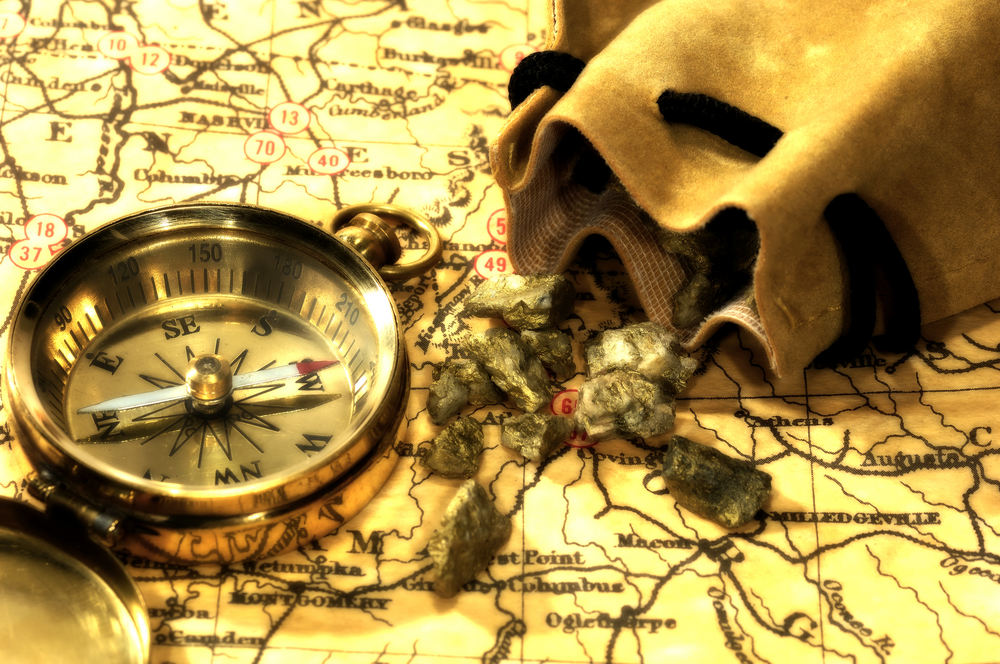Years ago, I remember making my first precious-metal purchase.
Silver was $5 an ounce, and gold was going for $350. I walked into a coin shop and asked the owner if he had any 10-ounce silver bars for sale.
I’ll always be grateful for his response. The owner gave me a little silver seminar — the fabricator’s brand stamp, the weight in troy ounces, the “three nines fine” (the mark showing the metal is 0.999% pure silver). Then he picked up a big hardware-store hammer from behind the counter…
“Hear that?” he said, as he tapped hammer and bar together. A distinctive ping rang out. “That’s the sound of real silver.”
These days, though, the real thing (silver or gold) is getting harder and harder to identify…
Take, for instance, the recent discovery in March of counterfeit gold bars bearing the PAMP Suisse mark — a highly respected private gold mint.
Fugazi Gold
It’s not the first time that someone has faked a gold bar, of course, but the sophistication of the fakery makes it more notable — and dangerous for unwary gold buyers.
As noted by the folks at CoinWeek.com:
These new fakes not only have a better strike quality than previous examples, but there are no obvious errors in the packaging which bears the certificate number and other authentic-looking details from the purported manufacturer.
Measure the fake by length and width, and it seems like the real deal, but the bars are noticeably thicker when compared to a genuine bar, so that these fake PAMP Suisse gold bars weigh the same as the real thing.
It’s not just gold bars, either. Take the British £2 coin. It contains both gold and silver. Experts at the Royal Mint figured its bimetallic content would make it harder to counterfeit.
Turns out they were wrong. In 2014, Italian customs agents seized a half-million euros’ worth of these coins at a port in Naples. According to reports in the British press, the coins were “near perfect” in quality to real £2 coins.
Numismatic graders run across well-made fakes on a regular basis — Buffalo nickels, Mercury dimes, St. Gaudens double eagles, Morgan dollars — you name it.
Country of Counterfeits
Though coin counterfeiting has been with us for 2000 years, most fugazi numismatics today come from China. It’s a big business. (You can get a sense of just how big by taking a look at rare photos of a China-based coin counterfeiting operation obtained by numismatic expert Susan Headley.)
Until 2012, many fake coins entered the U.S. after being listed for sale on eBay as “replica coins” — but it doesn’t actually say “replica” on the coin itself. Since 2012, eBay no longer allows sales of replica coins. But that doesn’t stop many of the fakes from being bought by unwary fans of precious metal through alternative retail channels.
The problem is so big that the Industry Council for Tangible Assets, the numismatic watchdog group, appealed to Congress. The result is the Collectible Coin Protection Act. The law stiffens penalties and makes it illegal to make or import imitation numismatic coins that are not plainly marked as such. Congress approved the bill, and it was signed into law by the White House in 2014.
The law was a step in the right direction. But it can’t stop the bigger problem of counterfeit gold and silver already in circulation. So what can you do to protect yourself?
The most important step is to make sure you’re buying from a reputable, licensed dealer. Some people buy from established local sellers they’ve dealt with for years.
Others only purchase from big well-known precious-metal dealers on the Internet. For instance, The Sovereign Society has a marketing relationship with EverBank, which sells gold, silver, platinum and palladium coins and bars.
The main point is to make sure you know with absolute certainty who you’re buying from. Does the firm have a vested interest in carefully screening what it buys and sells? Will you have recourse if it turns out what you bought isn’t the real deal?
The counterfeiters are getting better and better at what they do. The only way to combat them is to be a smarter buyer of authentic gold coins and bars.
Kind regards,

JL Yastine
Editorial Director


